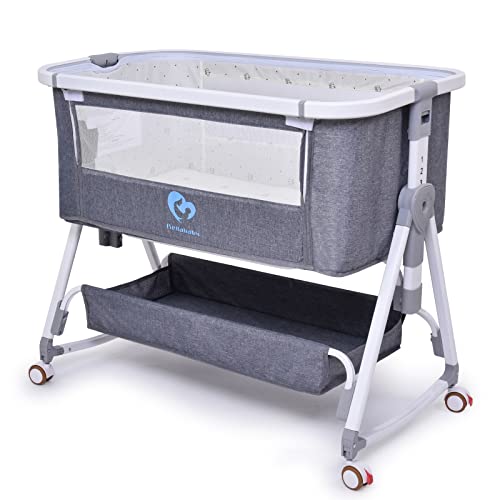How to Choose a Sale Cot
Mortuary cots are a crucial piece of equipment for funeral hospitals and funeral homes. They permit staff to safely and securely transport bodies. They offer a respectful, comfortable resting place for a body.
COTS items play a critical part in the federal marketplace, but they aren't easy to manage. This blog will discuss how COTS are integrated into GSA schedules and other procurement rules of the government.
Cost-effectiveness
The use of commercial-off-the-shelf (COTS) products allows procurement agencies to gain efficiencies by purchasing items that are readily available from the marketplace. This reduces development time and reduces cost of life. It also allows procurement agencies to reap the benefits of technological advancements and industry knowledge.
It is crucial to keep in mind that COT definitions can be subjective, and that different organizations may interpret COTS items in different ways. This can be a challenge for manufacturers who rely on a uniform method for calculating accurate prices for government. For instance, wholesalers and GPOs often have a list of COT items that are not in line with the list used by a manufacturer to determine government prices. A well-documented SOP and a COTS reference library are crucial elements in applying an effective and consistent methodology to assign COTs.
Reliability
A sale cot is an essential purchase for mortuary services. It should be durable and reliable enough to withstand high usage. It should also be easy to transport and set up. In the event of any issues following purchase, the manufacturer should offer an excellent customer service. Consider the feedback of your employees before making a decision. They are those who use the cots and can determine if the cot is durable and reliable.
GPOs and wholesalers frequently assign COT designations that don't align with the supplying manufacturer's list of COTs. This is a result of a variety of factors, including changing business models, mergers, and acquisition activity. This makes it difficult to apply a subjective lens to evaluate COTS.
Durability
The durability of sale cots is vital because they need to be able to endure regular use and transport. They are used by a variety of funeral homes to display the remains of deceased persons. They should be strong enough to support the weight of caskets as well as other things. Cots must also be resistant to corrosion and have an enduring structure that is easy to put together and disassemble. It is important to choose a business that offers customer service and can assist with any problems that might arise after the purchase.
Solid wooden cots are the ideal option for furniture for babies since they're durable enough to last and less likely to be contaminated with harmful chemicals or toxic off-gassing, unlike composite materials like MDF or chipboard. Additionally, they're much more attractive than cheaper alternatives.
If you're seeking a cot that doubles as a lounge chair, the Westport design from Silver Cross might be the best option for you. It's constructed of sturdy material and comes with three different height levels for growing babies. The instructions may be confusing however, this crib is worth it once you figure them out.
The Helinox Cot One is the most lightweight cot on the market, but it's not as durable as the other models we've test. It's also more complicated to assemble, as it comes with a lot of parts. It's a comfortable cot and a good option for backpackers. Mini Cot Bed 's also 14 oz less than the Thermarest Luxury Lite or Sleep Rite.
Safety
If you are supplying cribs, make sure they meet the safety standards. This is an essential step to prevent injuries to children and deaths. This can be done by asking your supplier if their products have been tested independently. Ask your supplier to provide you with a copy of their test results. Alternately, you can arrange your own testing.
If you're buying a brand new cot or used it's crucial to make sure the safety of your cot prior to you let your baby sleep in it. Also, look for warnings and labels that offer information, as well a certificate from the manufacturer. It must be free of sharp edges, protrusions or gaps that can restrict a child's leg or finger. Additionally there should not be footholds in the cot can be used by a child to climb out.
When choosing a cot check that the mattress is clean and flat. It should be able to fit comfortably, without gaps. The bottom edge of the lowest rail should not be more than 30mm from the bottom of the mattress. If the base of the cot is adjustable, ensure it is set to its lowest position.
In addition, check that the slats and filler bars are securely fixed and don't have any tiny holes that could snag clothing. There shouldn't be bolts, nuts or corner posts that extend over 5 millimeters that could grab a child's hands and cause strangulation. Make sure the cot isn't in close proximity to curtains or blinds that can be grabbed easily by tiny hands.

Look for a label that shows the cot has passed obligatory tests and is in compliance with Australian Standards AS/NZS2172:2003 Cots intended for household use - safety requirements. This is the only way to ensure that the cot you are purchasing is safe and suitable for sleep. It's illegal for antique stores and second-hand shops to supply antique cots that do not have certificates or labels.
Accidents can happen, even though most designers and manufacturers try to ensure that their products are safe. Older cots used by previous children may not be safe standards and can be a danger of death from suffocation or ingestion of foreign bodies.
